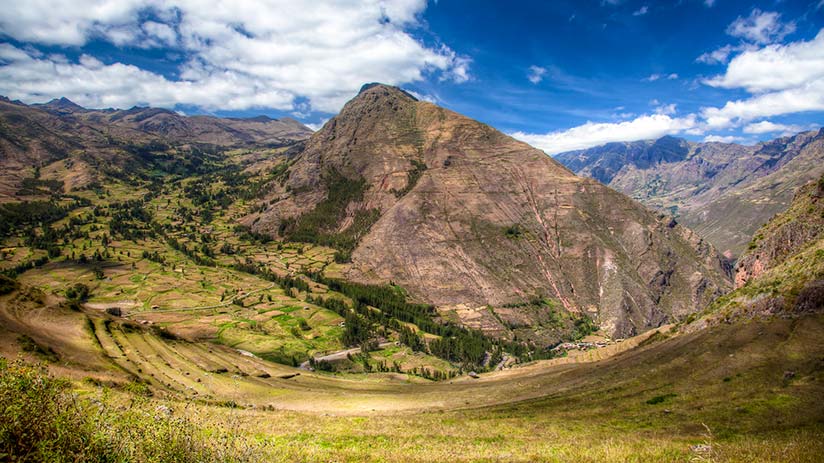Most of the people who visit the Sacred Valley do so through an organized tour that can take all day. The tour includes several vital destinations in the Valley, such as Pisac, Ollantaytambo, Urubamba, and Chinchero, among others. There, not only can you enjoy various tourist destinations, but you can also visit some Inca archaeological ruins. For this reason, together with the travel experts of Machu Travel Peru, we want to tell you all about the Sacred Valley map and its different attractions, Pisac, Calca, Urubamba, Ollantaytambo, and Chinchero. Also, we want to describe to you an alternative route that includes Maras and Moray. So, that in your future trip, you will not miss absolutely anything about this magical place.
Everything about the Inca Sacred Valley map
- About the map
- The traditional route of Sacred Valley
- Sacred Valley short route
- Other attractions in the Sacred Valley map
- Sacred Valley tourist ticket
About the map
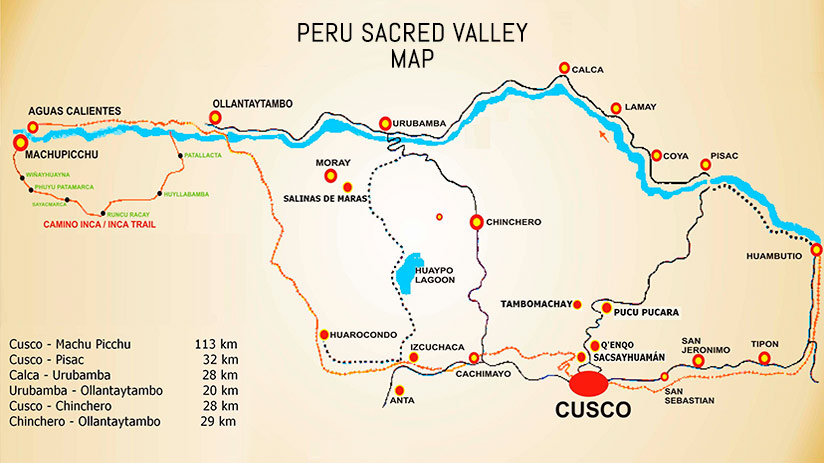
The entire Sacred Valley map is where the real magic of tourism happens. Between the ancient Imperial City (Cusco) and the Wonder of the World (Machu Picchu) is a stunning mountain range of valleys that has different colonial and traditional towns, as well as numerous archaeological ruins to explore. The Urubamba River shapes the Valley; along with this, you will find its various cities, Sacred Valley hotels, and countless archaeological sites. Formerly, the Sacred Valley was a place of great importance during the time of the Inca Empire; the space was adored thanks to its fertile lands and warm weather. For the ancient Inca, the Sacred Valley served as an agricultural, spiritual, and political center. Today, it is still an important cultural and tourist center that preserves much of its old essence.
The traditional route of the Sacred Valley
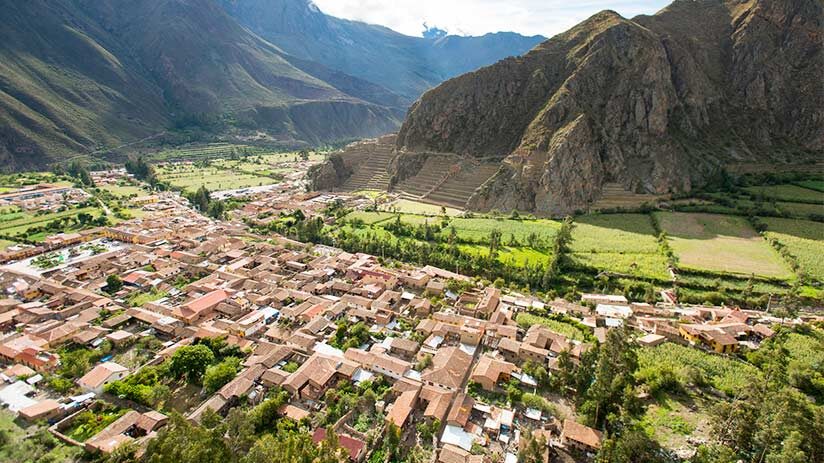
Nowadays, any tourist who wants to visit Machu Picchu, hike the famous Inca Trail or combine a cultural visit with adventure sports like trekking, rappelling, rafting, and even Zip Line has to make an obligatory stop in the Sacred Valley. Usually, most of them follow the traditional route that has been used for many years (almost since Machu Picchu was exposed to the world in 1911 by the American explorer Hiram Bingham). There, you will find traditional and well-known attractions. Following, you will find the most important attractions that are located along the route, from east to west, beginning in Pisac and finishing in Ollantaytambo.
Pisac in the Sacred Valley map
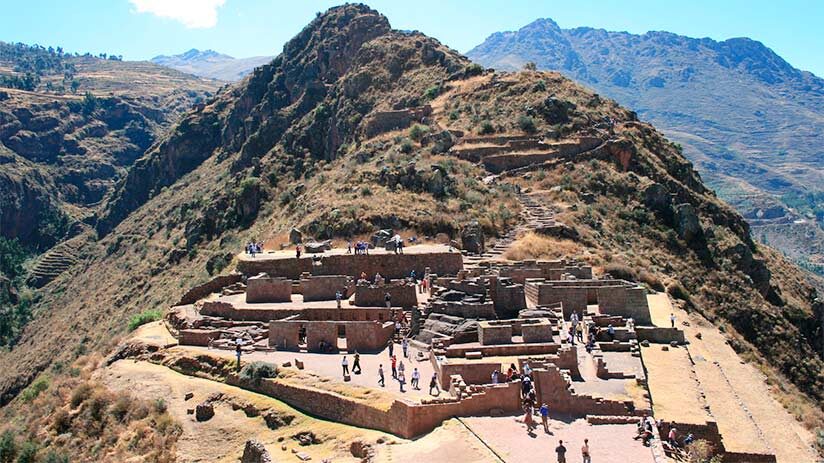
One of the must-see destinations on the Sacred Valley map is Pisac. The current town was built on an ancient Inca settlement. However, the Incas buildings, squares, and temples situated over the hill Apu Inti Huatana are still visible. This small town is located close to Cusco, 52 kilometers from its northeast side, over 2950 m.a.s.l. and offers one of the best local tourism experiences. Besides being the beginning of the Sacred Valley map, if you look at it from east to west.
- The Pisac Market is one of its main attractions, full of locally produced products and crafts with Andean and Inca iconography like looms made with alpaca and vicuña wool, perfect copies of “Cusco school” paintings (the originals can be appreciated inside of main Cusco churches), little sculptures of Incas sovereigns made of quartz, silver pieces of jewelry among others. In other words, it is the perfect place to go shopping.
- The other great attraction is the Pisac ruins, which are located over, 3300 m.a.s.l. On top of Apu Inti Huatana Hill. The ruins are only 20 minutes by car from the current town, although you can also walk towards them (1 hour). They are one of the best-preserved Inca ruins, and their different structures and buildings are worth visiting. The Incas complex was an advanced military observatory with ceremonial neighborhoods, temples, squares (Kanchas), and even a cemetery (that today remains stands). The town was built under the orders of Inca Pachacutec mid the 15th century and was attacked by Spanish invaders mid the 16th century. However, it is still one of the best-preserved Inca towns in all of Peru.
Calca in the Sacred Valley Map
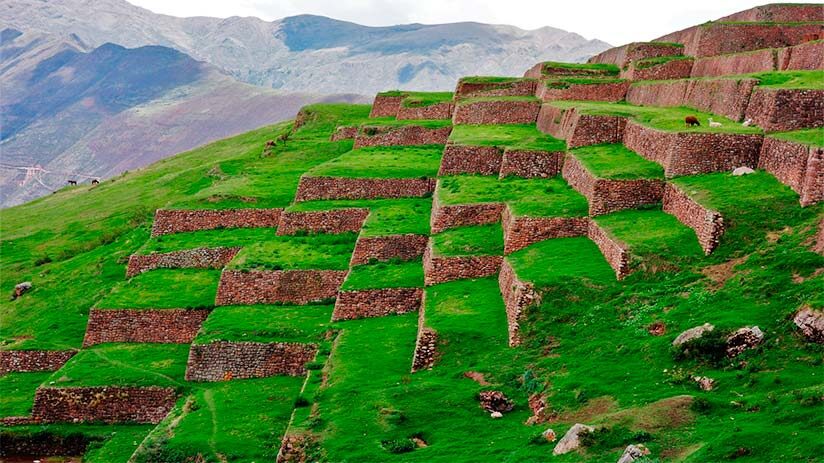
More than a tourist center with attractions or Incas ruins, Calca is the second-largest urban center in the Sacred Valley, just behind Urubamba. The current town is located 52 kilometers north of Cusco, to over, 2925 m.a.s.l. There, you will find drugstores, money exchange counters, national bank subsidiaries, restaurants, and some hotels of 3 stars. However, the attractions that surround the town are worth it to be mentioned.
- Huchuy Qosqo: This ancient Incas town is located in the Lamay district, over a plateau of 3,600 m.a.s.l. To 6 kilometers south of Calca and 48 kilometers north of Cusco. This complex of rooms, squares, and temples was built was ordered to be built by the Inca Viracocha between 1000 and 1400 BC as his rest residence. It is of particular importance because it is one of the oldest Inca ruins in all of Cusco, this is the reason for its advanced deterioration progress, but worth it visited. To get there, you have to do hiking following a Zig-Zag path from Lamay, approx. 03 hours to climb up to the ruins, and another 3 hours to go down. Huchuy Qosqo has the complete package; adventure, effort, and history!
- Lares: This district is located 99 kilometers north of Calca and 150 kilometers north of Cusco, at over 3,171 m.a.s.l. It is the farthest attraction of the traditional route of Sacred Valley. But, Why Lares is so important? Well, because Lares has relaxing hot springs where the visitant can enjoy and rest before beginning the famous trekking “Four lagoons”. This trekking route pass by Snowy slopes, snow, and glacial lagoons. Definitely, an unmissable point in your Sacred Valley itinerary. Even, the route offers the possibility of connecting the final stretch with the Ollantaytambo train station, to get to Machu Picchu!
Urubamba in the Sacred Valley map
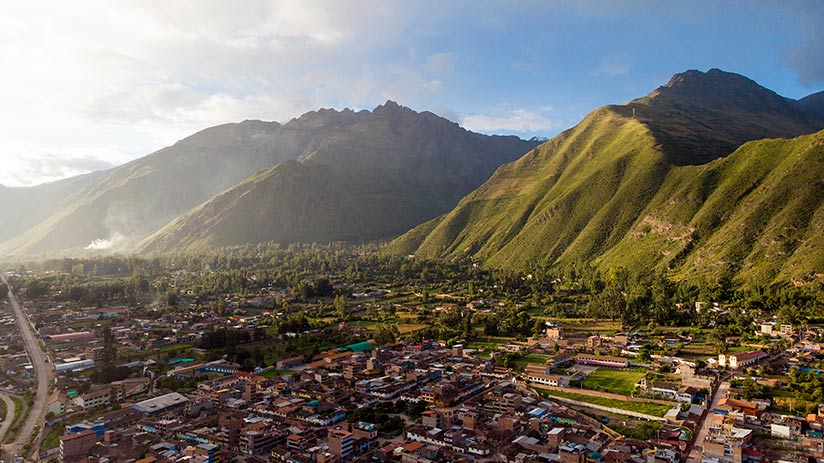
Urubamba is the largest town on the Sacred Valley map. The city could be considered more of a commercial center than a tourist center, with food markets, restaurants, drugstores, hotels, and even, little commercial centers. Around the town are located the most exclusive and five-star hotels like the Tambo del Inca, a Luxury Collection Resort & Spa hotel (5 stars), the Rio Sagrado Belmond hotel (5 stars), the Sol y Luna Relais and Chateaux (5 stars), the Sonesta Posada del Inca Yucay hotel (3 stars), San Agustin Monasterio La Recoleta (4 stars), the Aranwa Sacred Valley hotel and Wellness (5 stars), the Inkaterra Hacienda Urubamba (5 stars) and the Explora Sacred Valley (5 stars) But despite this, there are many attractions to enjoy around it. Very close to the town, there is the possibility of visiting Yucay, a charming little town with more than one secret to discover.
- Yucay: This town is cataloged as the most picturesque and charming in all of Peru. Perfect weather with temperate days and warm nights, without mention the fertility of its lands. This town was the favorite of Wiracocha, Pachacutec, and Huayna Capac Incas. Even, some chronicles point to Yucay as the true capital and center of the entire Sacred Valley of the Incas. The town is located at 2,858 m.a.s.l and 9 kilometers from southeast of Urubamba. Besides enjoying the perfect weather, you can appreciate the palace of Sayri Tupac (one of the last Inca sovereigns who survived of Spanish conquest), the Yucay Andean terraces, and its large main square.
Ollantaytambo in the Sacred Valley map
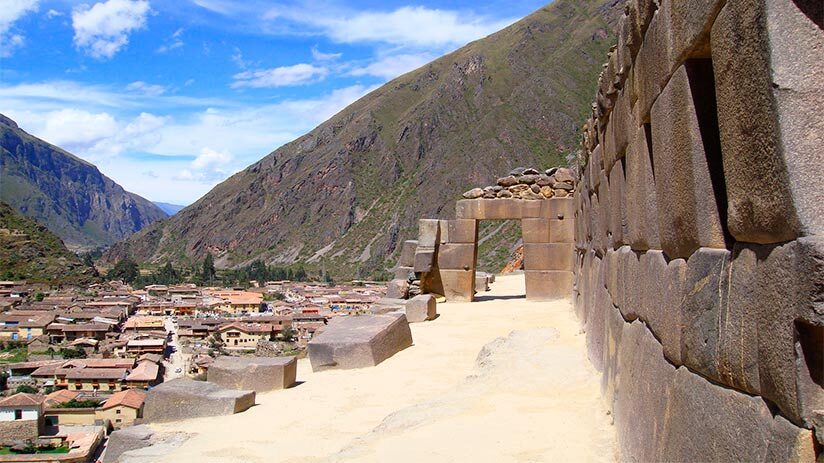
If you are looking to visit Machu Picchu, you will probably get to know Ollantaytambo. Because this town hosts the train station previous to get to the world wonder. Ollantaytambo is a beautiful town that is located at the northern end of the Sacred Valley, 62 kilometers northwest of Cusco (At the southern end is Pisac)
It is one of the most popular destinations among tourists and, similar to Pisac, the town is composed of a modern town located on the slope of the hill that receives the same name as the Incas complex. This town is the only one that conserves, almost 95 % of the original form of houses in the Incas times (carved stones, mud, straw, and wooden beams) Even, the water channels that decorate its little streets come from the Archaeological Park located on the top of the hill. Therefore, many scholars affirm that the Ollantaytambo town is the last Inca settlement to live in Peru, take a walk in its streets is traveling to the past.
On the other hand, the Ollantaytambo ruins are one of the best attractions around; it has some of the best stonework after Machu Picchu. The zone was already inhabited when Pachacutec Inca invaded them, conquered them, and ordered them to build Andean terraces to support the future buildings to be built on top of the hill in the middle of the XV century. In this form, the Inca founded a city accommodation, with some temples destined for Sun worship, ceremonial rooms, squares (Kanchas), and Tambos or food storage. Visit it is a unique experience in a Sacred Valley map itinerary, and it has to be on the list of destinations for every tourist looking to see Peru.
Sacred Valley short route
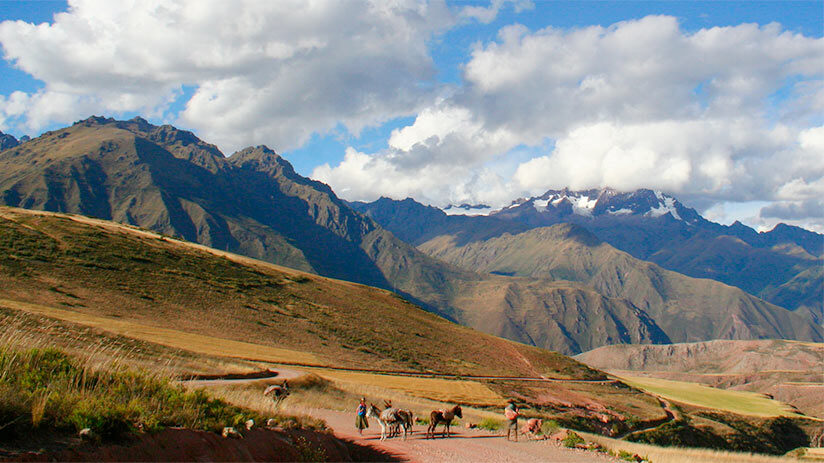
Usually, to complete the traditional route of Sacred Valley, from east to west, departing from Pisac, and finishing in Ollantaytambo, take a complete day (full day) trip. But, if we analyze our Sacred Valley map, there is a short route, with a vertical direction, from south to north, which passes by three interesting attractions, little by little, they are having more influx of tourists in recent years. Lines below, you will find a brief overview of the Inca agricultural research center of Moray, the famous Incas salt mines of Maras, and the beautiful colonial town of Chinchero.
Moray in the Sacred Valley map
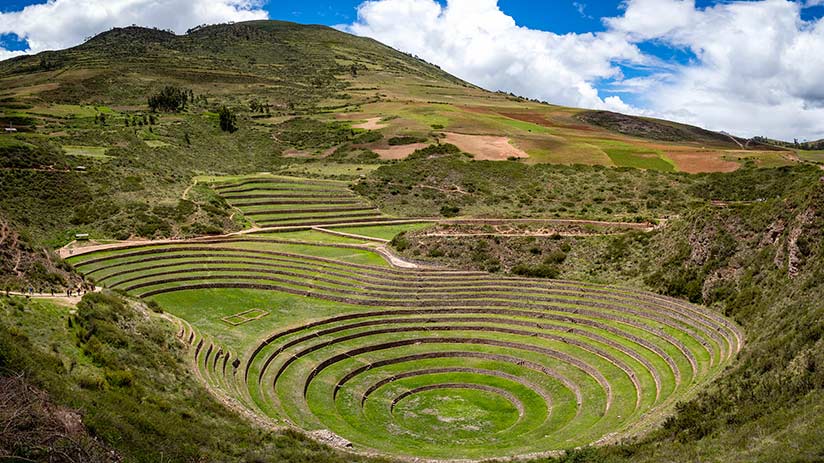
The mysterious rings (Circle Andean terraces) that go deep into the earth are a natural spectacle in the Sacred Valley of the Incas that no tourist should miss. Moray is located 50 kilometers northwest of Cusco and 37 km southwest of Urubamba. Recent research affirms that the Inca complex was an agricultural research center that the ancient Peruvians used to prove different kinds of corn crops. They planted a specific type of corn seed in an entire circle (Circle Andean terraces), to see the type of crop they produced. The research shows that each circle has its own microclimate and specific type of earth, without mentioning that Moray is located over 3,500 m.a.s.l. in a little valley surrounded by hills and mountains, creating warm weather in its interior. Amazing!
Maras in the Sacred Valley map
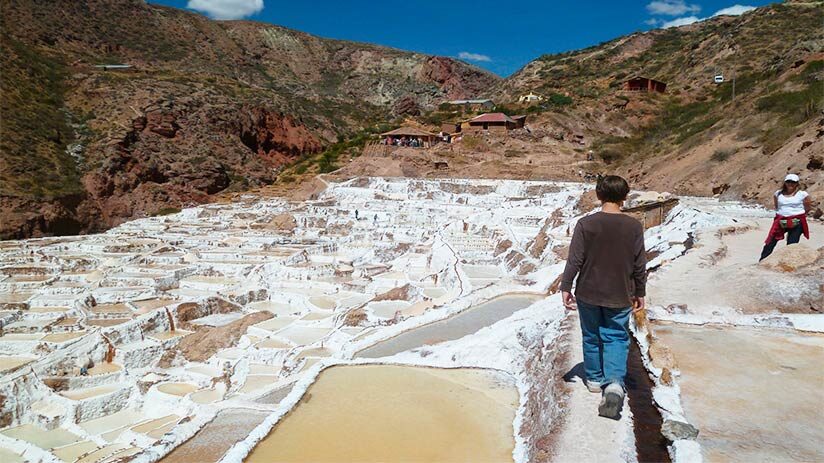
The Maras salt mines have been used for the production of salt since pre-Inca times. We are talking about more than 3,000 salt wells located over 3,000 m.a.s.l. on the slopes of Qaqawiñay mountain. These wells are fed by an underground hypersaline spring that originated 110 million years ago, during the formation of the Andes mountain range. Therefore, if you look at the mountain in the distance, it seems to be covered by giant snowflakes, these are the salt wells! These mines are located 43 km northwest of Cusco and 15 km southwest of Urubamba. The Salt mines were exploited by the Incas and now are used by the Maras people. You can enjoy a trek through the salt mines, appreciate how local families harvest and sell their salt, and hopefully buy some Maras salt. Recognized chefs around the world recommend it for grills and barbecues.
Chinchero in the Sacred Valley map
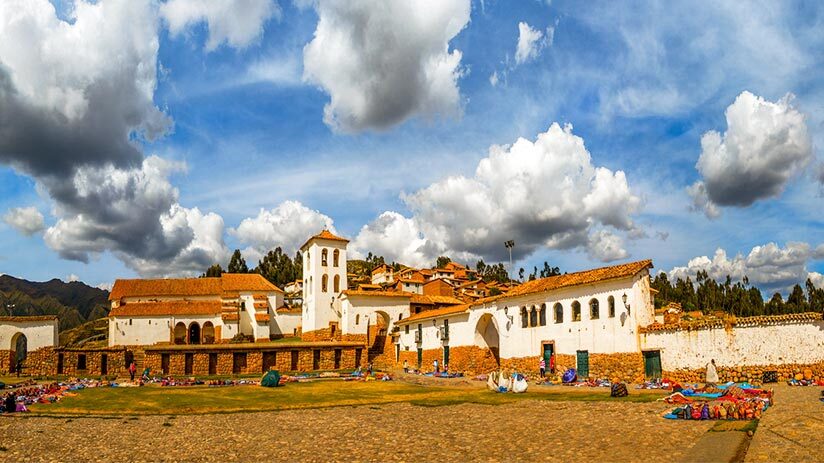
Chinchero is known as the birthplace of the rainbow. In general, this destination is not usually as crowded within the Sacred Valley map, but it is typically an interesting stop during the return to Cusco. Among the many things to do in Sacred Valley, being able to visit Chinchero is one of the best options available. In Chinchero, you will find four interesting points to visit:
- Colonial church of Chinchero: The church of Nuestra Señora de la Natividad is, maybe, the best example of a colonial church in all of Peru. The building has not been much affected by the earthquakes that devastated Cusco, preserving its original structure and façade since its construction in 1607. The church preserves a unique collection of paintings with religious themes in Andean landscapes, called “Escuela Cusqueña”.
- The Chinchero Main Square: Every Sunday, the Main Square of Chinchero is witness to an ancient Incas practice by the surrounded communities’ people who meet in this square to interchange products like potatoes, corns, seeds, llama and Alpaca wools, and even animals. The practice of barter. Also in the frosty season (April-June), the visitors can see how the local people, previous feet clean, step on many potatoes, to produce the Moraya and Chuño (dehydrated potatoes)
- Archeological park of Chinchero: 40 meters away from the main square, in the west, is located some ruins that belonged to a country house of Tupac Inca Yupanqui. The famous Inca ordered the construction of rooms and halls to rest him, his family, and his lineage (Panaca). Of course, after the Spanish conquest, the site was burned down but today, the base of some buildings still standing, and it is a reminder of the solid and perennial history of the great Incas.
- The Andean Textile Interpretation Center: In Chinchero you will find many Andean Textile Interpretation Centers, where bouncy local women teach the tourist the extraction process of the alpaca and llama wool, its coloration, and its manufacture in precious garments with Andean themes, such as sweaters, scarves, jackets, shirts, among others.
Other attractions on the Sacred Valley map
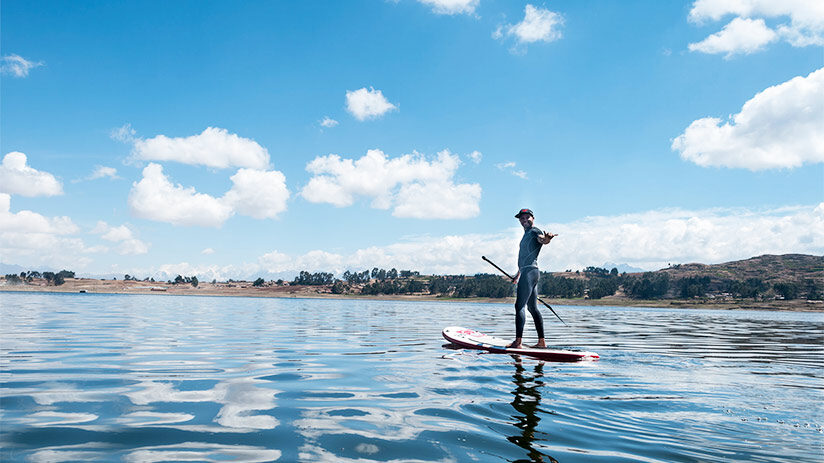
During your tour through the Sacred Valley map, there are countless attractions to enjoy. Its colonial towns are not the only thing to visit; among its many charms, there are specific guided tours that pass through the well-known Huarocondo town, where you will taste delicious roast pork called Lechón. Or you can go beyond the town of Ollantaytambo, to visit the community of Patacancha, where you will see an authentic Inca weavers community. Without mentioning the lagoons of Piuray and Huyapo, where you will practice the kayak, paddling, and rafting. Also, there are numerous guided tours that run through some of the essential ruins that stretch throughout the Sacred Valley. Of course, you can check our blogs, to discover what are these. You can enjoy any of these tours with us!
Sacred Valley tourist ticket
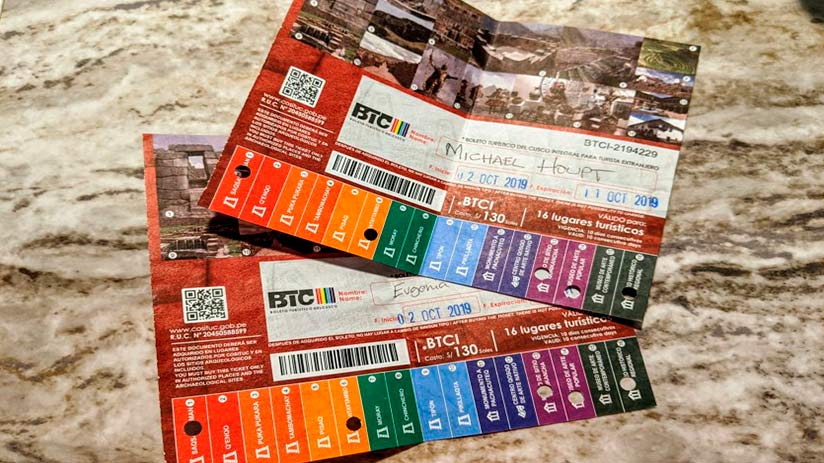
Most of the ruins and sites mentioned can be visited with a Cusco tourist ticket. This ticket allows you to visit most of the attractions that are on the Sacred Valley map. Then, you can begin your tour on your own or take one of the many tours in Peru offered around this beautiful city. The best thing is to start organizing your trip now and save yourself some hassle.
“PEOPLE DON’T TAKE TRIPS, TRIPS TAKE PEOPLE”
As you can see, the entire map of the Sacred Valley includes numerous unparalleled attractions. Being able to enjoy a tour of the Valley as a whole is one of the best experiences before embarking on the Wonder of the World. You will also be able to acclimatize to the altitude and feel much more comfortable on your trip. We hope together with Machu Travel Peru to have been of help, remember that you can find out more about the Valley and its attractions with our distinguished advisers.
Peru has so much to offer, it can be hard to know where to start. With many years of experience in the tourism sector, Machu Travel Peru is happy to help with anything regarding your trip to Machu Picchu and any tours around it. Make your Machu Picchu experience an unforgettable one!
